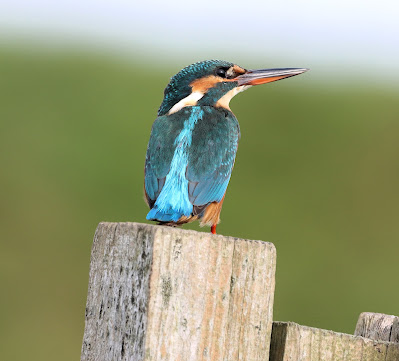Surprise surprise. We survived Storm Debi, a “storm” hyped up by the usual suspects quoting 70 mph gusts from well-known exposed sites on cliff tops and unprotected coastal locations. Here in flat windswept Fylde the gusts turned out to be nothing more than the typical weather we experience for days at a time every autumn. Strong winds with bouts of rain, before everything returns to normal a day or two later.
We know of course why they do it – to crank up climate alarmism for people who have yet to realise that the “climate emergency” is one big scam designed to part them from their money.
Clearing our garden of neighbours’ sycamore leaves is a yearly event come rain or shine but inventive doom mongers have yet to claim that the late falling leaves of 2023 are due to global warming.
Early this week we pencilled in the only suitable day, of Friday for a ringing session at Oakenclough near Garstang. Will visited a week earlier with moderate success that included the catching of four Common Crossbills, a few Redwings and other bits and pieces.
Yours truly, Will and Andy met up at 0730 to rain but forecasts of brightening skies and afternoon sun; before planning a ringing session we make it a rule to check at least two weather forecasts as they hardly ever agree. About an hour later the rain relented and we set to the job in hand and landed a good variety of species, 18 birds before packing in about 1100 when things turned suddenly quiet.
We caught no more Crossbills, a rarely encountered species that would have enlivened the usual autumn fayre of 4 Blue Tit, 4 Chaffinch, 2 Goldfinch, 1 Coal Tit, 1 Long-tailed Tit, 1 Great Tit, 1 Great-spotted Woodpecker, 1 Treecreeper, 1 Siskin, 1 Lesser Redpoll, 1 Goldcrest.
As autumn turns effortlessly to winter, so do the birds, with little in the way of numbers that punctuate September and October ringing sessions.
Noted today, small numbers of Jackdaws, Woodpigeons and Starlings. Otherwise let’s hope that some of the influx of Waxwings, & Short-eared Owls to Scotland and the east coast of England can find their way westwards.
Both species pictured below from previous winters in the Fylde.
Waxwing
Short-eared Owl
Enjoy your weekend folks. Stay safe, warm and sane then come back again to Another Bird Blog for news, views and photos.
Linking this Saturday to Eileen's Saturday Blog.
















































.JPG)





























